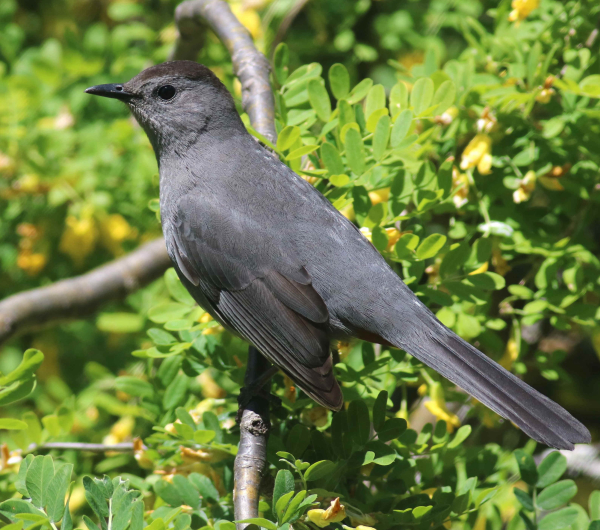Mass collision of birds in Chicago highlights need to protect migrating species
Earlier this month, nearly a thousand migratory songbirds on their way to Central America for the winter died in window collisions with a single building in Chicago. Species included many long-distance warblers that also travel through Michigan, including hundreds of palm warblers and yellow-rumped warblers.
The tragic loss of this many birds is a conservation concern for birds already facing significant population declines from habitat loss and climate change. North America is home to nearly 3 billion fewer breeding birds compared to 1970. Additionally, two-thirds of North American bird species are at risk of extinction due to climate change. Many of the affected species were neotropical migrants, which are long-distance migrants that breed in North America and overwinter in Central and South America. These birds already face a complex range of threats such as development pressures and invasive species.
While collision events as large as this are rare, bird collisions are not.
They are a leading cause of bird mortality, with up to a billion such deaths yearly in the U.S. alone. Michigan lies at the intersection of the Mississippi and Atlantic flyways, migration routes that bring over 350 bird species through the state each year, with fall migration peaking in October.
There is good news: With artificial light at night and reflective surfaces as the main causes of bird deaths, bird collisions are preventable. A 2021 study published in the Proceedings of the National Academy of Sciences of the United States of America discovered that by turning off half the lights in Chicago during bird migration, 60 percent fewer birds would die.
How to help
Research shows that some birds are more likely to hit buildings than others. Some of these birds – dubbed “super-colliders” – are headed to Michigan in the next few weeks, including American woodcocks and white-throated sparrows. Here are a few ways to protect them:
- With 44 percent of bird collisions occurring at residences, simple steps can make your home or workplace more bird-friendly.
- Support Audubon’s plea to building owners, managers and homeowners to turn off excess lighting during bird migration months to help ensure safe passage between nesting and wintering grounds. Take the Lights Out Pledge.
- Interested in monitoring bird collisions? Reach out to your local Audubon chapter to see if there’s a monitoring program, or search for a Global Bird Rescue Team near you. You also can keep a lookout for window collision victims in your community. Report a dead bird using the Global Bird Mapper, and learn how to help surviving birds get the care they need.
For more information, read the full Audubon Great Lakes story.
MI Birds is a public outreach and engagement program created by Audubon Great Lakes and the DNR, which aims to increase all Michiganders’ engagement in the understanding, care and stewardship of public lands that are important for birds and local communities.
Questions? Contact Erin Rowan Ford at 313-820-0809.





